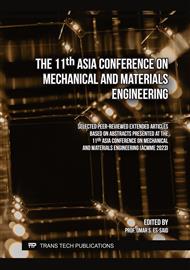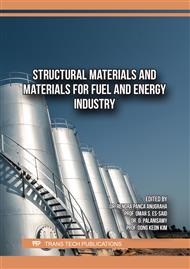p.97
p.107
p.115
p.123
p.135
p.145
p.151
p.159
p.169
Stability Evaluation of Nanofluids Suitable for Enhanced Oil Recovery
Abstract:
The evaluation of metal oxides nanoparticles stability in the base fluids has become a major aspect in enhanced oil recovery process in recent years. Physical and chemical properties of ZnO nanofluids have caught attention of many researchers because they are easily dispersed in the base fluids, better convective coefficient of heat transfer, and wider bandgap which make them remarkable nanofluids candidate compared to other metal oxides. In this study, the stability of nanofluid of zinc oxide nanoparticles was evaluated using different stability tests and analysis. However, ZnO nanoparticles were synthesized using sol-gel method and nanofluids of different concentrations were prepared. The prepared nanoparticles were characterized using various characterization techniques such as XRD, FTIR, TEM, and Zeta sizer. The stability of prepared nanofluids was investigated using sedimentation test, UV-vis spectrophotometer, and zeta analyzer. Based on physical investigation and UV-vis spectra observations, ZnO nanoparticles in base fluids have shown a good colloidal stability in addition to their high zeta potential values of-43.7 (mV) after seven days which makes it a successful potential candidate for enhanced oil recovery applications.
Info:
Periodical:
Pages:
151-157
Citation:
Online since:
December 2023
Keywords:
Price:
Сopyright:
© 2023 Trans Tech Publications Ltd. All Rights Reserved
Share:
Citation:



